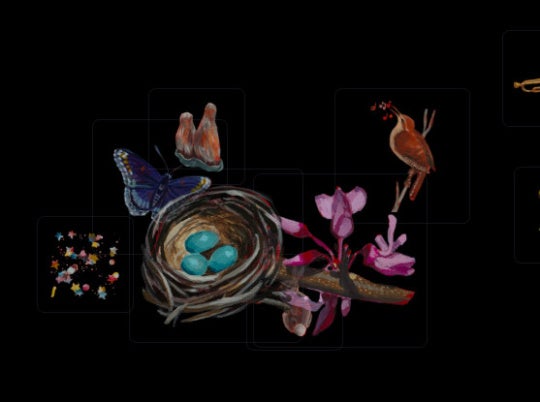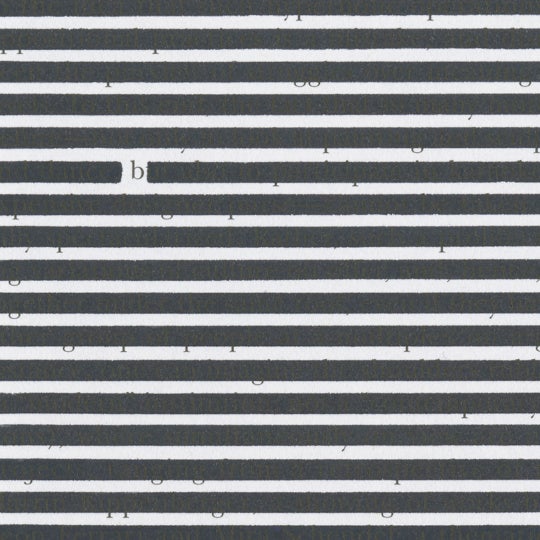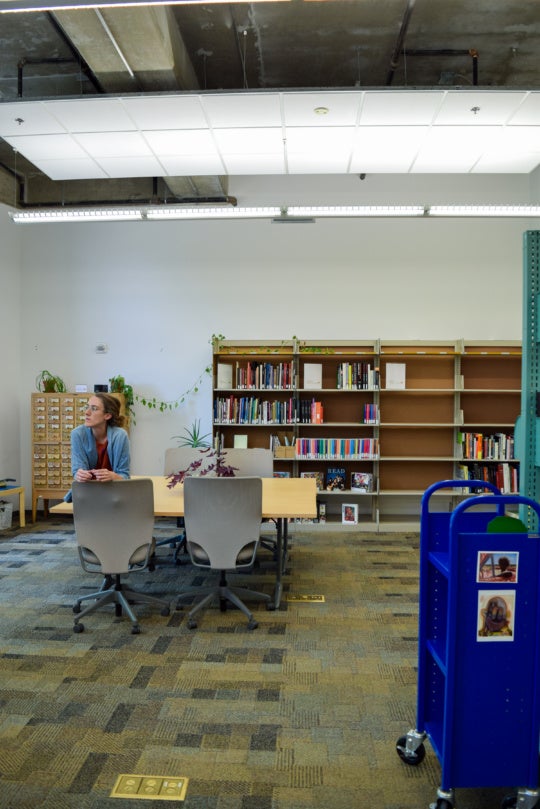
Everyone is familiar with paper, but not necessarily with how it is made. Teresa Cole’s current exhibition, “Depth of Surface,” at Whitespace brings paper to the forefront and will definitely cause you to think more about the methods of creating handmade paper, and better appreciate its delicate textural qualities.
The New Orleans-based artist is known for her work as a printmaker. Cole has been exploring papermaking as way of uniting image and structure in her work. One of the ways she does this is with “pulp painting,” creating her patterned images with handmade paper pulp so that the resulting image is also the paper itself.
International travels and residencies have had a significant impact on her work. Her time in India and Japan has influenced the motifs that dominate in this show, although pattern and ornament have been part of Cole’s visual language for a long time. She describes it as “a grammar, a dialect, a language of desire.” The artist has also recently worked at Dieu Donné Paper Mill in New York City, where several of the works in the show were created.

Pink Moorish Pattern is a delicate work with a thick pink pulp sitting atop a translucent cream background paper, almost like a cake fondant. It has such a subtle color palette that, upon closer inspection, it is almost surprising to discover such a luscious and rather bold surface. Indigo Chevrons and Indigo Stepwell are also painted paper pulp but made with a different technique so that the navy blue and white pulps create one single surface. These works most directly reflect the artist’s interest in uniting image and structure. Cole’s papermaking process allows for the graphic hard-edged pattern of chevrons to actually have softer irregular edges due to the intermingling of the paper fibers. Whether subtle/bold or hard/soft, the artist’s work benefits from a play of opposites.

The largest works in the show called Saturate and Infiltrate are dimensional constructions inspired by lanterns and time spent in Japan at the Awagami Factory, which produces artist papers. Cole printed, folded and dyed Washi paper in a complex variety of combinations with a palette of blues. She then used these papers to create the cylindrical structures that are mounted on the wall with bamboo, attempting a rhythm of repetition and variation. Although the papers and patterns are intricate and quite beautiful, these pieces lack the intrigue of her other work. The structure is somehow too direct in its reference to Japanese lanterns and materials, missing a more innovative interpretation. Each curved paper is abutted to the next one in a way that the individual components don’t feel well integrated as a bigger whole. Her “Transposition” series, which uses the same printed Japanese papers and bamboo in two-dimensional constructions, is more successful. Here the papers are stacked and overlapped in a way that feels more cohesive. As seen in Transposition 1, the architecture of the composition enhances the patterns of the paper and makes it easier to appreciate the paper itself.
Overall, Cole’s aesthetic as a printmaker carries over nicely into papermaking. Her love of the art-making process and attention to detail is clear. “Depth of Surface” is a relatively subdued show where visitors will want to get up close to enjoy the revelation of her processes.
Teresa Cole’s show “Depth of Surface” is on is on view at Whitespace through March 26.
Terri Dilling is an Atlanta-based painter and printmaker, a Georgia State University alumna, and board president of Atlanta Printmakers Studio.




